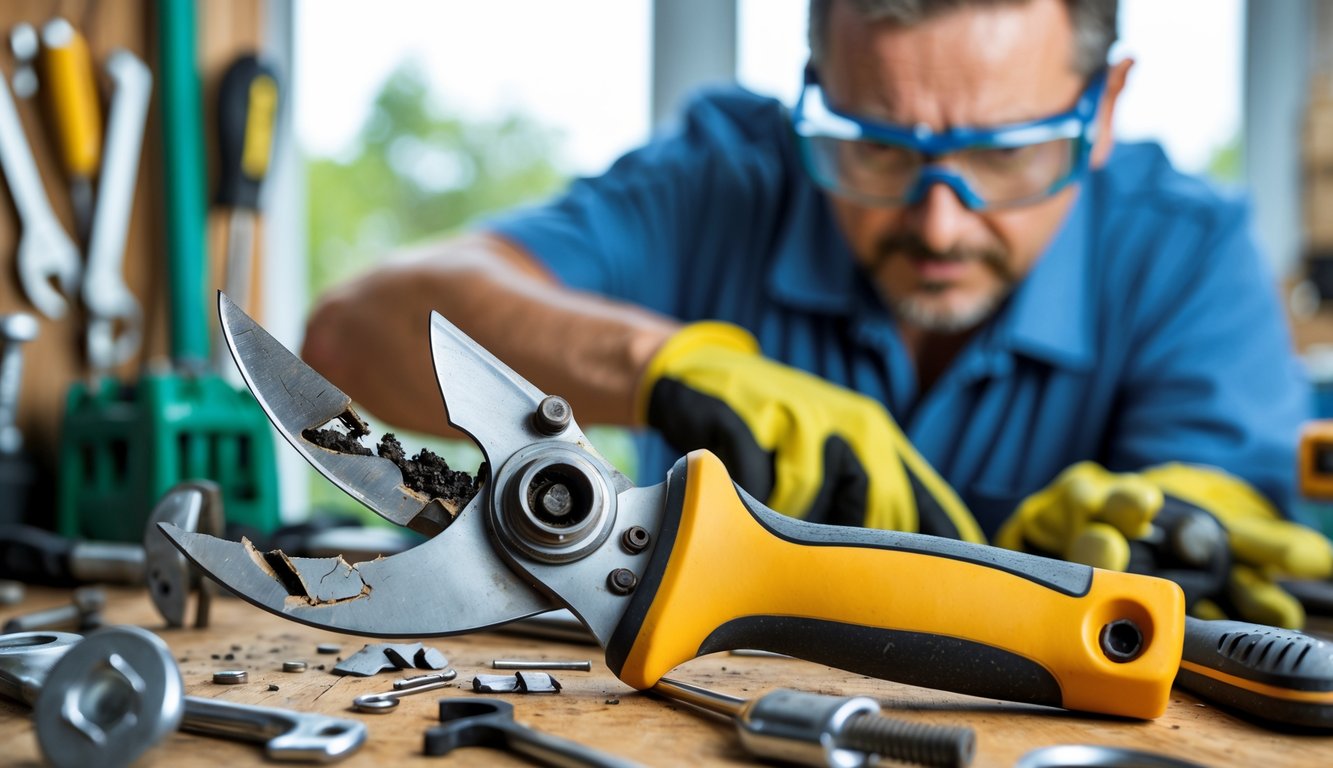
Garden Tool Repair Techniques
Ever tried to patch up a string trimmer with “all-purpose” tape? Don’t. Trust me, it’s a waste of time (and tape). What actually worked for me: yanking off those sad, cracked handles and screwing on hickory replacements—yeah, real wood, not that hollow plastic. For busted plastic bits, I reach for two-part epoxy, but only the polyolefin kind. Generic super glue? Just peels off, don’t bother. My torque wrench—couldn’t live without it. Nobody warns you that tightening bolts to the right spec matters more than slapping on some “ergonomic” grip. Go figure.
I’ve ruined more mower repairs than I want to admit. I used to think just cleaning the visible gears was enough. Wrong. You have to degrease every moving part, especially with lithium grease. The pros say so, and I guess they’re right. Misaligned blades? They’ll fry your motor. Ignore that because “it sounds fine now”? Enjoy shopping for a new mower way sooner than you’d like.
People claim plastic-forged ratchets are junk. Partially true, but if you realign and re-lube them with silicone-based stuff, they last—mine’s still kicking two years past its “expiration.” I keep a handwritten table of torque specs, lubricants, and when to swap parts taped to my shed door. It looks terrible, but hey, it’s better than buying new tools every spring.
Practical Maintenance Tools and Methods
Red grit everywhere, splinters, busted handles—nothing just “stores itself.” Breaking a shovel halfway through a job because of rust hiding under the paint? Don’t even get me started. Staying on top of maintenance beats buying new junk every year. That’s the only way my stuff keeps working.
Steel Wool and Wire Brush Application
Honestly, nothing chews through crusty mud and surface rust on my pruning shears like coarse steel wool. I use 000-grade for tight spots near rivets—otherwise, it’ll just strip the finish. Dullness sneaks up on forks and secateurs, but a wire brush is my go-to for thick, stubborn rust, especially that orange stuff that creeps into seams.
Last May, I got lazy and just wiped my tools with a rag. Huge mistake. Edges dulled, hinges dragged, everything felt off. Three weeks later, after a quick scrub (and a sore elbow), everything worked smooth again. Some folks love rotary wire brushes on drills, but those things fling debris everywhere. I prefer slow, gritty work with a towel underneath to catch the mess. Plus, I can actually see if there are pits or cracks—top brands hide defects too. Oh, and don’t catch your pants in the bristles. Ask me how I know.
Preventing Rust Effectively
Everyone’s grandma says “just wipe it dry,” but mine ran a landscaping crew and swore by boiled linseed oil after every wash. Boiled linseed oil, not raw, soaks into wood handles and shields metal. If I skip it, I’m prying apart a rusted pruner next weekend—guaranteed.
People hype up fancy waxes, but honestly? Oil gets into scratches and keeps rust out, while wax just slides over. Miss a speck of dirt and it’ll suck in water under that “smooth” surface—nature’s sabotage, I guess. Don’t store tools point-down in a bucket unless you want chipped tips. Wall rack, above ground—hanging them in the shed isn’t overkill, no matter what my neighbors say. At least I don’t trip over mine.
Documentation and Knowledge Sharing Benefits
I started jotting down what broke and when. It’s a mess. Everyone around here has the same pruner failures and rust issues, but nobody ever logs it, so we just repeat the same mistakes. I’ve watched teams waste whole mornings searching for a torque spec that’s “in the binder,” but the binder is always missing.
Best Practices for Maintenance Logs
Ask three people how they do repair logs—you’ll get four answers, none like the manufacturer’s. I had to buy neon sticky notes just to flag blade tension entries. If you can’t spot patterns, nothing improves. What helps? Digital logs with boxes for grease, dropdowns for torque, initials. Hyper-specific.
Last month, not a single breakdown got logged the same way twice. Total chaos. I dug up a research review that basically says: if documentation isn’t consistent, you get repeat failures and nobody knows which tool or vendor to avoid. I always include a “rant” section, because sometimes those rants are the only way we spot a bad batch before ordering again.
One guy started doodling diagrams in the margins, and suddenly everyone copied him. Pictures stick better than perfect sentences, apparently. If I ever meet a mechanic who reads the full OEM manual, I’ll buy them lunch.
Encouraging Team Knowledge Sharing
I sat through a huddle where someone asked, “Did you see what happened with the folding hoe again?” Nope. Nobody did—the guy who fixed it never told anyone, so three people struggled through the same repair. Teams waste hours chasing answers that organized knowledge sharing would solve in minutes.
Now, one person writes about a strip-out in Confluence, tags someone, and suddenly six people know not to brute-force that hinge. Not glamorous, but it saves money. Atlassian claims poor knowledge sharing costs $47 million a year for big companies—still waiting for my share of that invoice.
Honestly, the only reason some lessons get shared is because someone brings donuts to Friday standup. If donuts are the secret, I’ll buy a dozen every week. The trick isn’t tech. It’s making people want to blurt out what they learned—good, bad, or just plain embarrassing. That’s how you finally stop the cycle of dumb repeat mistakes.